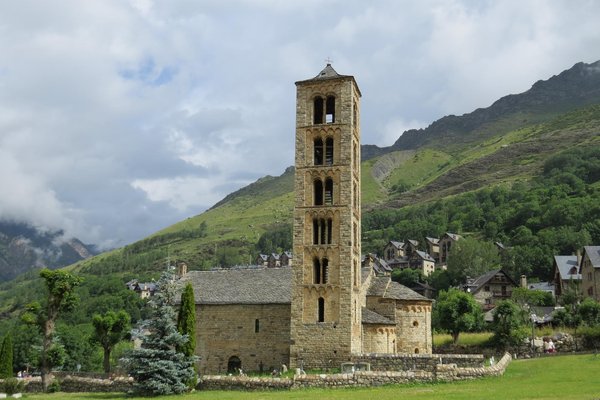Spain
Vall de Boi
The Catalan Romanesque Churches of the Vall de Boí are renowned for their Romanesque decorative art and architecture.
The nine Early Romanesque churches lie in a narrow, steep-sided valley on the edges of the Pyrenees. Built between the 11th and 12th centuries, they feature bell towers in the Lombard Romanesque style and rich wall paintings.
Community Perspective: Their locations make them very picturesque. A good introduction to their history and architecture can be had from the Centre del Romànic in Erill la Vall. Be aware that most of the original interiors (including wall paintings) have been removed to the Museu Nacional d'Art de Catalunya in Barcelona.
Site Info
Official Information
- Full Name
- Catalan Romanesque Churches of the Vall de Boí (ID: 988)
- Country
- Spain
- Status
-
Inscribed 2000
Site history
History of Vall de Boi
- 2000: Inscribed
- Inscribed
- Type
- Cultural
- Criteria
- ii
- iv
Links
- UNESCO
- whc.unesco.org
- Official
-
- centreromanic.com — Vall de Boí
- Related
-
- pantocrator.cat — Video mapping the paintings in Sant Climent de Taull
All Links
UNESCO.org
- whc.unesco.org — whc.unesco.org/
Official Website
- centreromanic.com — Vall de Boí
Related Resources
- pantocrator.cat — Video mapping the paintings in Sant Climent de Taull
Community Information
- Community Category
- Religious structure: Christian
Travel Information
Recent Connections
-
Perfect Inscriptions
2000 -
Minority communities
"The way of life in mediaeval Catalonia… -
Cultural landscape not recognized
The official description states: "The R…
Connections of Vall de Boi
- Geography
- Trivia
-
-
Minority communities
"The way of life in mediaeval Catalonia as expressed by this group of churches and villages can be said to have been of great importance in the recognition of Catalan cultural identity. The Romanesque art of these Pyrenean villages played a vital role in the movement for the restoration of Catalan nationality and identity in the early 20th century." (Official description)
-
- History
-
-
Feudalism
They were built between the 11th and 12th centuries under the patronage of the Lords of Erill. Criterion iv "The Vall de Boí illustrates the continuous occupation of an area of land. The churches that were built in the Middle Ages at the instigation of a single family symbolize the affirmation and geographical settlement at the time that historical Catalonia was created." - AB Evaluation
-
- Architecture
-
-
Romanesque
-
Significant frescoes removed and displayed at a museum
Most frescoes have been removed and are displayed at the Museu Nacional d'Art de Catalunya in Barcelona
-
- World Heritage Process
-
-
Perfect Inscriptions
2000 -
Cultural landscape not recognized
The official description states: "The Romanesque churches and the villages where they stand form an excellent example of a cultural landscape that has flourished in harmony with a natural environment that has remained intact to this day." However the Vall de Boi does not feature on the Unesco CL list.
-
- Religion and Belief
-
-
Fortified religious buildings
"The tall towers of the churches served both to house the bells and to act as lookouts in case of attack. Alongside each of them is the walled village cemetery. The three belltowers of Boí, Taüll, and Erill la Vall are intervisible, a notable defensive feature." - AB Evaluation
-
- Constructions
-
-
Cemeteries
"Alongside each of them is the walled village cemetery." - AB Evaluation -
Freestanding Bell Tower
Sant Climent de Taüll "Next to the building stands a six-story bell tower which despite being attached to the building, is not an integral part thereof." - Wiki "The most imposing feature of Sant Climent is its bell-tower, at the south-east corner of the church. This is square in plan and soars from a simulated solid base to six storeys." - AB Evaluation
-
- Timeline
-
-
Built in the 12th century
"The Vall de Boi..bears unique witness to an indigenous cultural tradition which has survived since the 11th century.. The churches...were consecrated during the 11th and 12th centuries. The exceptional number of Romanesque churches.....is attributed to the fact that large quantities of silver came into the region, especially in the first decades of the 12th century. The group of...churches constitute a unique example of the cultural tradition which flourished in 12th century Catalonia (AB) - it could be 11C but the majority of the churches seem to be 12C and that was the period of "flourishing" rather than "commencing"
-
News
No news.
Recent Visitors
Visitors of Vall de Boi
- 2Flow2
- Adolfo
- alicemears
- A. Mehmet Haksever
- Ammon Watkins
- Anna Wludarska
- Argo
- arnaugir
- Atila Ege
- Bin
- campmany
- Claire Bradshaw
- Clyde
- Cristina Erba
- Daniel Chazad
- Dan Pettigrew
- Dolemite92
- Els Slots
- Emili Xaus
- Eva Kisgyorgy
- Filip Murlak
- FS
- Gabbro
- Gary Arndt
- GeorgeIng61
- HaraldOest
- Harry Mitsidis
- Hasco
- Hubert
- Iain Jackson
- Ivan Rucek
- Jakob F.
- Jana and Matt
- Janina Lehmann
- Jarek Pokrzywnicki
- Jasam
- Jean Lecaillon
- Jeanne OGrady
- Jezza
- Joel on the Road
- Jonas Kremer
- Joyce van Soest
- Karito Vies
- Kbecq
- krtek
- Kurt Lauer
- Lara Adler
- Loic Pedras
- Luis Filipe Gaspar
- Maciej Gil
- Małgosia Łupicka
- Martinacurra88
- Martina Rúčková
- Matthewsharris
- MH
- Mikko
- MMM
- MoPython
- Nihal Ege
- PabloNorte
- Patrik
- Paul Schofield
- PeterA
- PeterH
- Petteri
- Philipp Leu
- Philipp Peterer
- Porcho
- Roger Ourset
- Roman Bruehwiler
- Sabrina Liebehentschel
- Schnitzel
- Sergio Arjona
- Shandos Cleaver
- sibariam
- Solivagant
- Sorel Americo
- Stanislaw Warwas
- Szucs Tamas
- Tamara Ratz
- Tarquinio_Superbo
- Thomas Buechler
- Thomas van der Walt
- Tim Allen
- Tom Flaten
- Tonisan
- triath
- Viaje al Patrimonio
- Vincent Cheung
- WILLIAM RICH
- Wojciech Fedoruk
- Xiong Wei
- Xiquinho Silva
- Zoë Sheng
Community Reviews
Show full reviews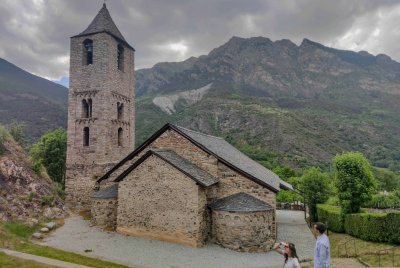
Though Hubert's review is over a decade old, it was the most recent one written before my May 2025 trip to Vall de Boi and I have to say, not much has changed. In fact, Hubert's review is quite comprehensive and I recommend giving it a read before reading my own here. I'll try and fill in any gaps.
Yes, this high concentration of churches were constructed by the Lords of Erill, though as the attendant at the one of the churches told us, it was not for religious piety that the lords constructed the buildings but rather to establish a particular small territory as their own during the constant conquerings and re-conquerings between the local leaders during that period.
In our visit to Vall de Boi, because it is so remote and takes so much effort to get to (we rented a car from Barcelona) there were very few other tourists, leading to the sense of peace and serenity that other reviewers have described. It's practically just you and the majestic mountains, deep in the heart of the Pyrenees. (Though Els' review makes me wonder if it used to be more popular.) We only saw one proper "tour group" in our time in the Valley, and they all arrived on a bus at the same time as we did to flood the seats of the "audiovisual" projection show in Sant Climent de Taüll. (Which, while not amazing, is still pretty neat and worth seeing.)
Eagle-eye …
Keep reading 0 comments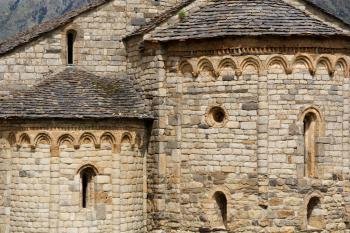
The Vall de Boi is a narrow valley in the Pyrenees and is best known for its nine Romanesque churches. The high density of pure Romanesque architecture far away from big cities and major trading routes, their location in a rural setting and the picturesque mountain scenery are the characteristics of this WHS.
The rulers of the valley, the Lords of Erill, became rich by trading with silver and they have spent part of their wealth for the construction of churches and their decoration with wonderful murals. However, the murals were removed at the beginning of the 20th century to prevent theft and destruction, they are now kept in museums, the most important murals are in the National Museum of Art of Catalonia in Barcelona (MNAC). The churches in Taüll and Boi show some faithful replicas. The murals depict saints and apostles, scenes from the Bible, and also mythical creatures and animals: a camel or an elephant with tusks on the head.
We started our visit at the Centre del Romànic in Erill la Vall. The interpretation centre provides information about the history of the churches and the murals. You can also buy a combined ticket for the three churches in Boi, Taüll and Eril la Vall. A fourth church, Santa Maria in Taüll, can be visited free of charge, the others are not regularly open to individual visitors.
The largest church in the valley is Sant Climent de Taüll, it also has the most striking architecture with three naves …
Keep reading 0 comments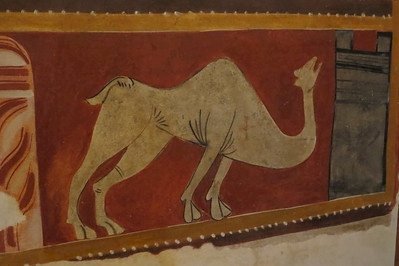
The picturesque setting of these churches, their lean towers contrasting against the backdrop of the Pyrenees, is the strongest point of this WHS. Most of the villages they belong to have a nice medieval feel to them too. Unfortunately, the original murals have all been taken away (“preserved”) to museums in bigger Catalan cities such as Barcelona.
I visited 5 churches, and after that felt I had seen enough of them. In my opinion, the two in Taüll are the most impressive. The large Sant Climent church is visually striking, it makes you want to take more and more pictures. It also is a very popular destination, my arrival coincided with a large tour bus. We all strolled uphill through the touristy streets of Taüll, to the Santa Maria church. It lies in an enclosed area at the town’s plaza, and although it doesn’t look much from the outside the restored murals here are very fine.
I had stayed overnight in Erill la Vall. Here I visited the Information Center of the Boí Valley. A video is shown that gives you a feel for how and why these peculiar churches came into existence, and why here. I guess these Catalan pilgrims were just jealous of the art and architecture they saw in Rome and the north of Italy and wanted to take something of it with them home. This resulted in the “import” of Lombard builders and craftsmen.
Keep reading 0 comments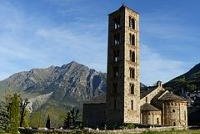
I visited this WHS in May 2014. It consists of series of 9 Catalan Romanesque Churches scattered in the Vall de Boi. The location of these churches in the high Pyrenees makes them very picturesque although quite difficult to visit without a car. However, if you decide to drive, bear in mind that you will be driving in countless hairpins, narrow roads and mountain passes for most of the time. Online I found a very good brochure of this WHS from the Centre Romanic in Erill la Vall (http://www.centreromanic.com/churches-opening-times-2014/fitxers/llibret_romanic_07_angles.pdf) with pointers on each church. Since I was driving from the Ordesa Valley, I decided to start with the Church in Coll. This is quite different from the rest of the churches and its main highlight is its carved entrance. To get to it I had to drive for 2.5km in a VERY narrow road (although paved) and since I arrived quite early in the morning I disturbed at least 5 deer along the way so I had to be extra careful and drive slowly to be on the safe side. Unfortunately this church together with the ones in Cardet, Barruera and Durro are usually closed unless there is a group of at least 20 people that make a request in advance to visit them. They don't have frescoes inside anymore although they contain colourful altarpieces. The church in Cardet and the Ermitage de Sant Quirc in Durro are quite similar and both are located at an altitude of 1600-2000m. I …
Keep reading 0 comments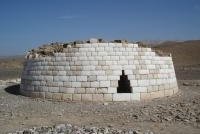
This was my favourite WHS on the Iberian Peninsular. The churches and their locations were spectacular, and the interior frescoes stunningly beautiful.
I started out from Poble de Segur and took the bus to Barruera via Pont de Suert. This bus arrived in time to catch the Traginer, a local minibus that visits the villages of Taull, Boi and Val de Erill. In the course of a day I visited the four churches in those villages, thanks to the driver of the Traginer who allowed me to get on and off at will. Finally I visited the church of St Feliu in Barruera before catching the bus back to Poble de Segur.
Keep reading 0 comments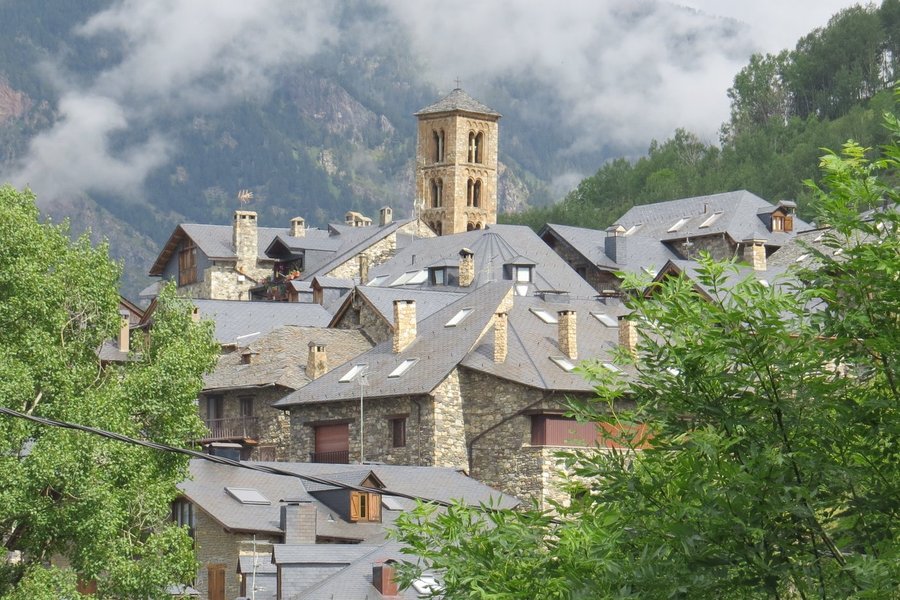
The Val de Boi gave me such a happy week in 2004. Taüll was the perfect place to stay, with two of the most sublime Romanesque churches, maintained in truly wonderful condition, just a few metres from my locanda. It was very peaceful throughout, with a natural alternation between visiting churches (mostly each late afternoon) and walking and scrambling through glorious scenery in the local National Park. Catalunya has maintained at least 8 of these astonishing buildings (almost all built around 1185-1215) really well; and they are often in truly striking, beautiful locations. See for yourself one of the Wonders of the Pyrenees !
Keep reading 0 comments
The romanasque churches are really beautiful, and deserve a visit since they are located inside a quiet and pure geographic region near Pyrenees. Some frescoes were removed in order to be preserved and can be seen in the MNAC museum in Barcelona.
The northern regions of Aragón and Catalunya provinces are one of my favourite places in Europe, full of well-preserved small and old villages, some keeping old castles.
Keep reading 0 comments
